Lifestyle
This is what's missing in our sex lives in 2024, according to Esther Perel
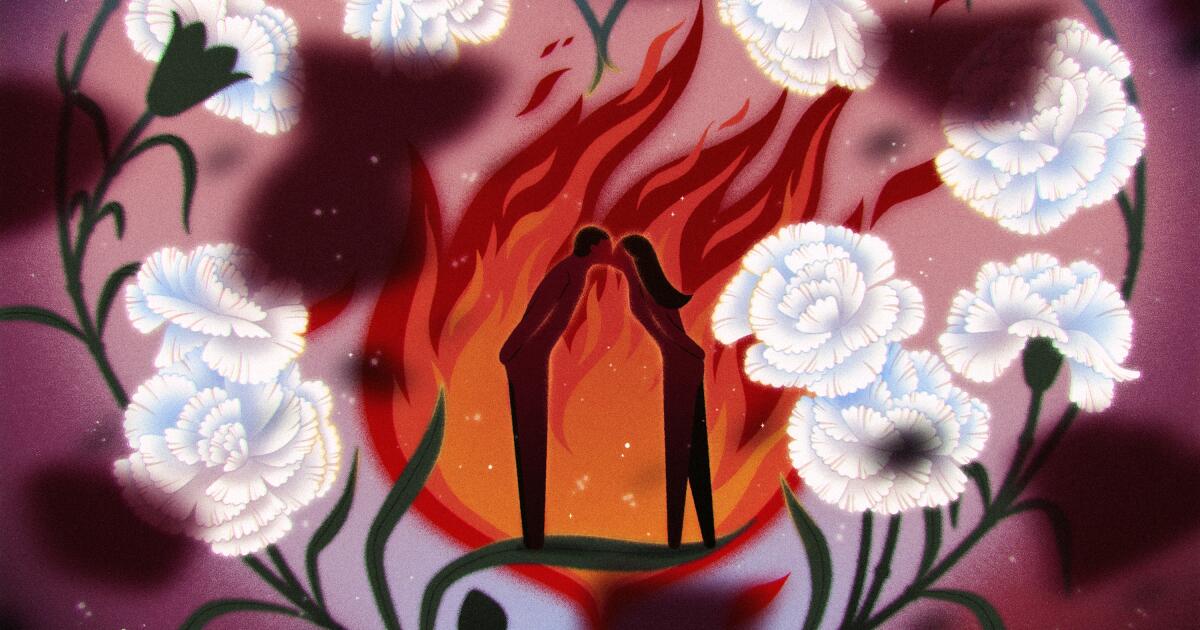
Esther Perel’s trajectory from private practice psychotherapist to internationally renowned relationship expert is deeply entwined with technology. It was her publisher’s printing presses that distributed her 2006 breakout bestselling book, “Mating in Captivity: Unlocking Erotic Intelligence” (HarperCollins), in more than 30 languages. The videos of her subsequent hit TED talks that brought her theories on desire and straying eyes to tens of millions of viewers. (The latter of which she expanded upon in her 2017 book, “The State of Affairs: Rethinking Infidelity”) Multiple podcasts that extended Perel’s therapy practice far beyond a physical office. An Instagram account where Perel sprinkles tidbits of relational wisdom into the feeds of more than 2 million followers. And, coming on Sept. 17, two hourlong online courses designed for people to strengthen their sexual connections.
“Suddenly, you can reach people in the villages of every continent,” Perel said. “That’s technology.”

Shelf Help is a new wellness column where we interview researchers, thinkers and writers about their latest books — all with the aim of learning how to live a more complete life.
But the same technological forces that have helped Perel’s ideas reach the masses have also begun to mold and meddle with modern-day relationships: We swipe to oblivion on soul-sucking dating apps, disappear like ghosts from our romantic interests’ lives and are lured from our partners by our smartphones at crucial moments for connection.
It’s these unsettling phenomena Perel aims to tackle in her most recent U.S. speaking tour, “The Future of Relationships, Love & Desire,” which she will take to the YouTube Theater on Sept. 10.
Ahead of her visit to Los Angeles, The Times spoke with Perel about Gen Z’s sexless reputation, the limitations of intimacy on online platforms and how public shaming on social media can interfere in the bedroom.
This interview has been edited and condensed for clarity.
How do you think technology has shifted the romantic landscape since you began writing about it?
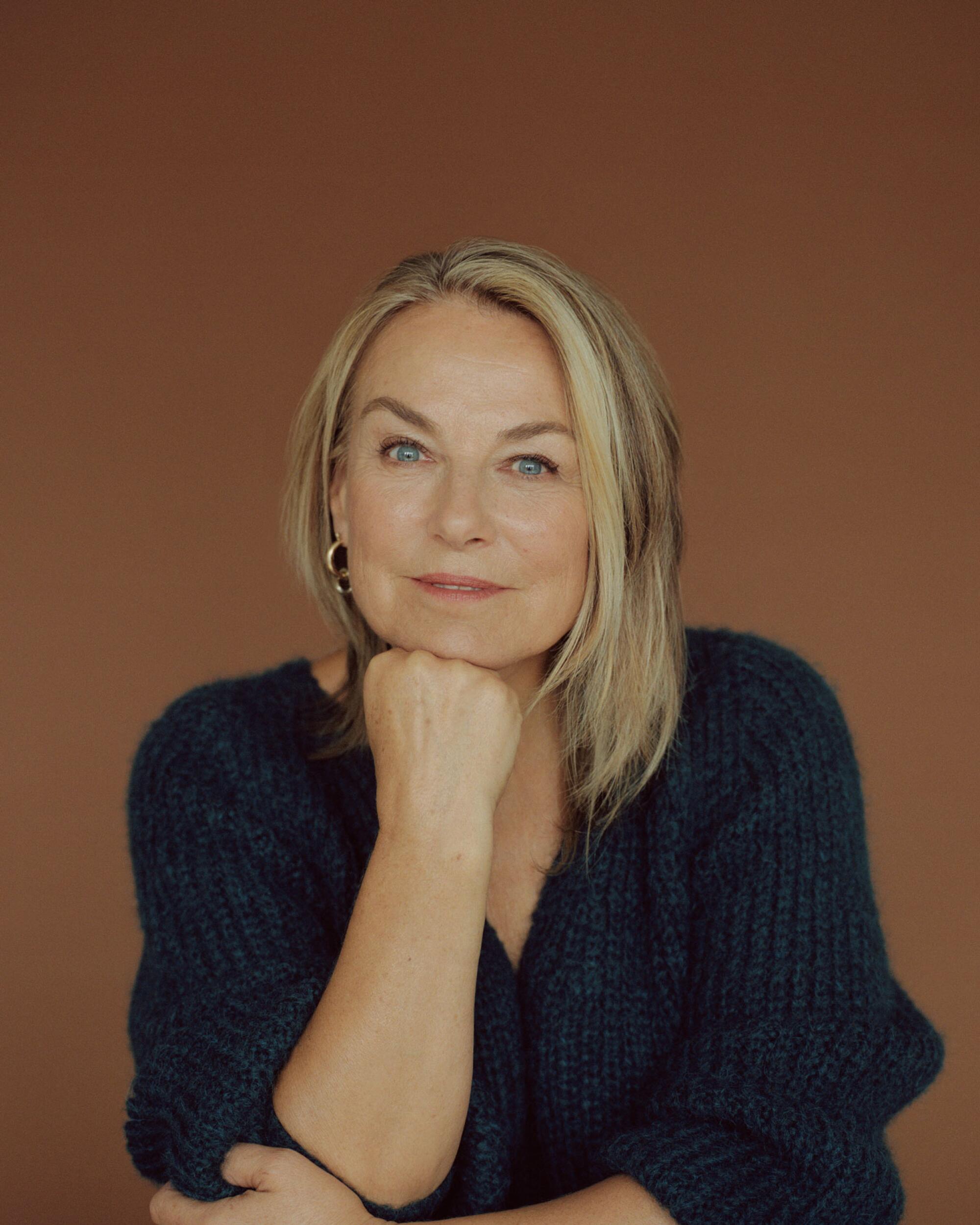
Esther Perel. (Katie McCurdy)
The predictive technologies that are promising to unburden us of the inconveniences of life are also creating a situation where we are gradually more anxious, not less anxious. Because we don’t get to practice the things that actually make us less anxious: experimentation, meeting with the unknown, dealing with uncertainty, the unexpected, dealing with the lessons that you learn from bad choices. That’s what makes you less anxious, not an algorithmic perfection.
If you spend so much time with algorithmic perfections, you begin to experience and create warped expectations, and you carry those expectations for perfection into your relationships with other people, and you become less able to deal with conflict, friction, difference.
Many studies say that Gen Z is having less sex, with fewer partners. A UCLA survey from 2023 said that a little more than 47% of people between the ages of 13 and 24 feel most TV shows and movie plots don’t need sexual content, and want more focus on platonic relationships. What do you make of this?
It’s symptomatic of something that is happening in society, in our changing culture. Technology being one piece of it. Relationships are imperfect and unpredictable. So is sex. And you’re vulnerable and you’re exposed, even. And, by the way, sex is never just sex. Even if you hook up.
So you’re less prepared for the vulnerability, for the unknown, for the consequences, for the challenges of communication that sex demands. If everything needs to be negotiated, as things are today, in relationships, and there is no longer a major religious or social hierarchy that tells you how to think, you have to make your own choices and decisions yourself.
Then in order to negotiate everything, you need to be able to communicate, and those very communication skills — the ability to deal with uncertainty and the unexpected — are the very skills that are weakening in the digital age. Sex is the messiness of human life, the bumps, the smells, the caring.
This, to me, is one of the central questions for the future: How are we going to manage the messiness of human life? That’s the opposite of an algorithmic perfection.
But the point is not that Gen Z wants less sex. They want less sex because they’re more isolated to begin with. They have less friends. They don’t go out, they work alone the whole day. You can go on an app, you can hook up, and after a while that gets a little boring for some. So it’s not the sex, it’s everything that sex is interwoven with.
Do you think it’s possible to foster that kind of intimacy you’re describing on digital platforms?
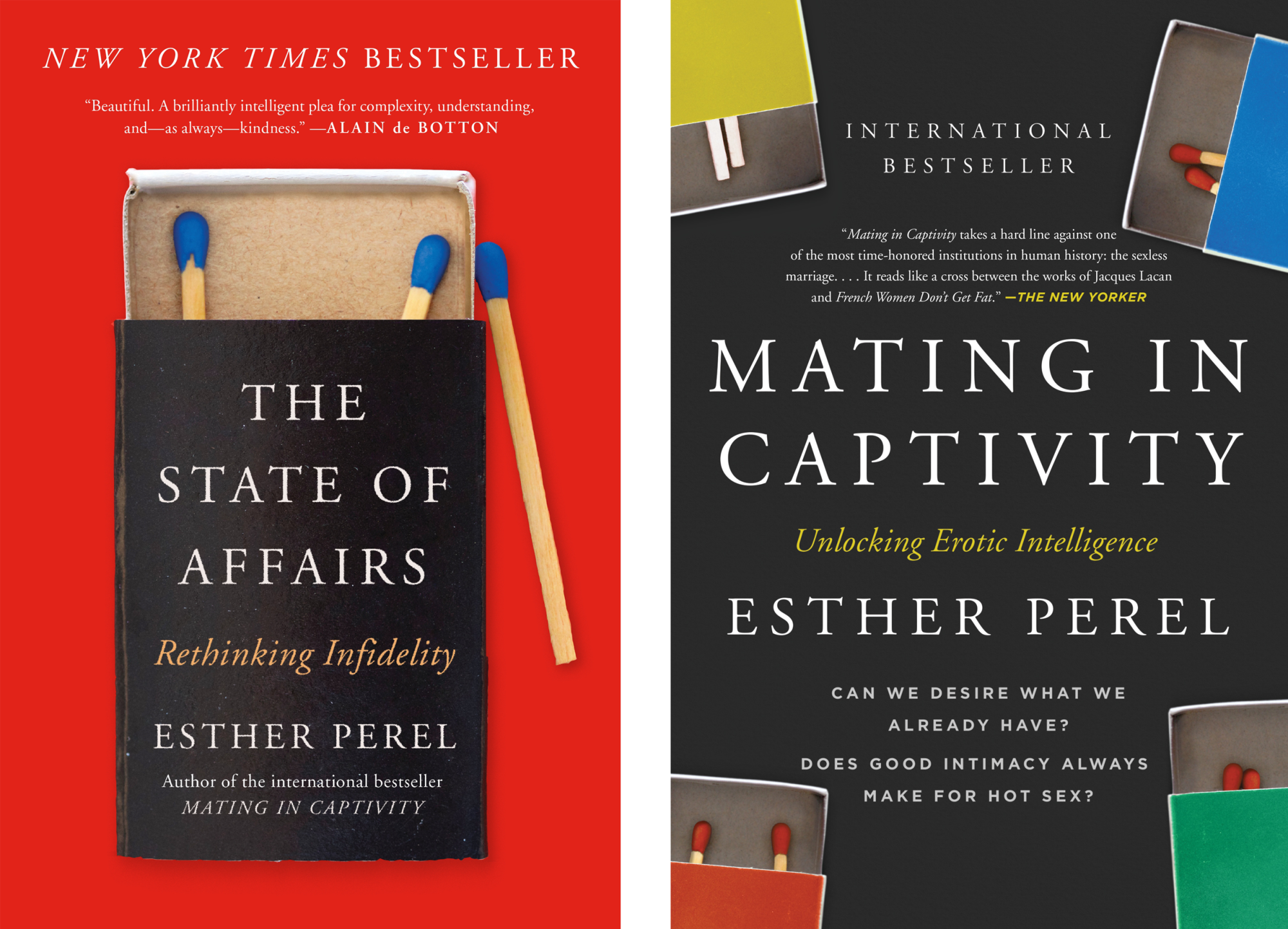
“The State of Affairs” and “Mating in Captivity” by Esther Perel.
Yes and no. For a lot of people, it allows them to meet in ways they could never have met. But I do think that this is emotional capitalism, in which you have 1,000 choices at your fingertips, in which you partake in a frenzy of romantic consumerism, in which you are afraid to commit to the good because you fear that you’re going to miss out on the perfect.
We find ourselves evaluating ourselves like products, and that commodification is soulless. Do people meet on dating apps? Absolutely. I think 60% of people these days meet online. But I think there’s going to be a generational shift. There’s more and more attempts by people who are done with the apps to meet in person, even if it’s speed dating, even if it’s meeting in other circumstances, or even if it’s coming to my show.
“Sex is never just sex. Even when you think it’s hit and run and it’s supposed to not mean anything, the effort not to make it mean something is meaningful.”
— Esther Perel
My most important message in response to this is: Don’t go on a date in a bar, in a restaurant, at a table face-to-face, that resembles a job interview where you’re asking each other a set of stale questions that tell you nothing while you’re waiting to see if you’re getting butterflies.
Go do something with your friends and bring your date along. Integrate the dating into your life. You will have 1,000 data points by just seeing how this person interacts with people, how they answer questions or how they make comments. But primarily, you’re not isolating yourself, cutting yourself off from your life to go play the lottery, to then lose, and to then have to come back with your shame, to your life, to your friends, to tell them it didn’t work. We can do better.
You’ve talked about how, once you walk into the bedroom, you should throw political correctness out the window. But these days we see a lot of online shaming related to that very thing. How do conversations about sexual politics on social media influence our personal intimate lives?
There’s two questions in what you’re asking. One is: Is there a new type of moralizing that is occurring? And then the second one is: What is the nature of erotic desire?
I see sexuality as a coded language, as a window into the self, into a relationship that demands deep listening, and that listening is that actually sexuality is a coded language for our deepest, emotional needs, wishes, fears, aspirations, wounds. That’s why I always say: Sex is never just sex. Even when you think it’s hit and run and it’s supposed to not mean anything, the effort not to make it mean something is meaningful.
In that sense, it is irrational. Why we like certain things, we don’t fully know. We don’t fully know why what I like, you find disgusting. We don’t fully know why this memory turned into a fantasy. We don’t fully know the inner workings of the erotic mind. The brain is a black box as it is, but this adds a whole other layer to its sexual fantasies. It’s a uniquely human production that makes no sense sometimes, because it defies our values. It defies our perception of reality. It defies our perception of who we are as good citizens.
Nobody wants some of these things in real life, but turned into play, they can become highly arousing, exciting and satisfying. And it goes even further when you go into the world of kink. The erotic mind is often politically incorrect, meaning it doesn’t abide by the rules of good citizenship that you yourself abide by in the rest of your life.
But let’s not be mistaken: nobody wants to be forced into anything in real life. Because when you play it, you’re not being forced. There is no greater freedom than voluntary surrender. But “voluntary” is the essential word, so it’s extremely carefully said. Because I know how tender and sensitive this is.
But that’s one of the ways I’ve helped people make sense of their sexual lives, their preferences, for over 40 years. Consent has become a central organizing principle, because consent goes with desire. If desire is to own the wanting, in order to own it, it has to be consensual. Sometimes it’s consensual, but not necessarily wanted, because we can live with all kinds of contradictions inside of us. I say yes to you, but not really to me — things like that. So consent is extraordinarily important, but it is not the only key element of sexuality. There are other pieces to this story.
TAKEAWAYS
from Esther Perel
We are shaming on a ton of different things these days. When I say we’ve taken the shame to the public square of social media, it’s because this is not that different from the kind of puritanical thinking of “The Scarlet Letter” and excommunications of all sorts that have existed throughout history. We have often, you know, exiled people to maintain our own moral superiority in various ways.
I’m not talking about people who deserve to be schooled for what they’ve done or arrested. I’m talking about how the collective and sexual scandals have forever been scandals that consolidated what was thought of as the moral fabric of the community that blamed, scolded or exiled you.
I know that the breadth of your work is not something that you can boil down to tips. But what do you want people to walk away with, to keep in your everyday life, from your speaking tour?
I’m not here to give you a talk. I’m here to co-create a conversation together, and like the best therapy sessions, they don’t end at the end of the session. It’s what happens afterwards. It’s who you talk to that you were sitting with and didn’t know an hour before. It’s who is waiting for you at home that you should have a difficult conversation with. And if you can internalize me and take me with you into your various areas of your life where you need some of that input, then I have done something meaningful.
Here’s one thing I say in the tour, and I say it in the courses too: Relationships are stories. What I would like to invite you to do is to consider your stories with a new curiosity, with more nuance and ambiguity. I want you to think about what are the parts of your story, relational and sexual story that you want to keep and develop further, and what are the parts of your relational story that you want to leave behind or change? That’s my invitation.
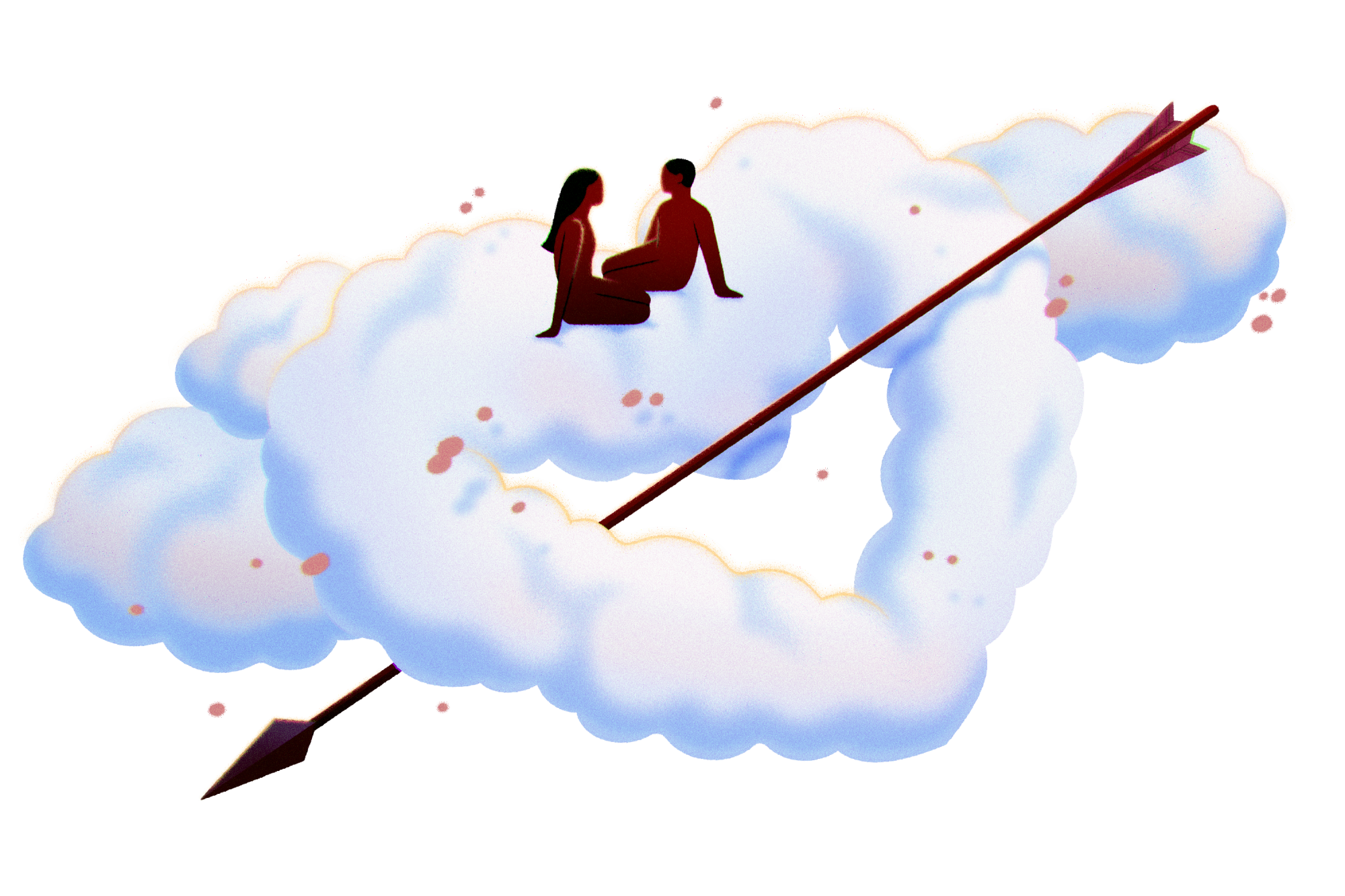
(Maggie Chiang / For The Times)
Shelf Help is a wellness column where we interview researchers, thinkers and writers about their latest books — all with the aim of learning how to live a more complete life. Want to pitch us? Email alyssa.bereznak@latimes.com.

Lifestyle
Upcoming Benefit Concert For L.A. Wildfires Gets Overwhelming Response From Artists, Bands
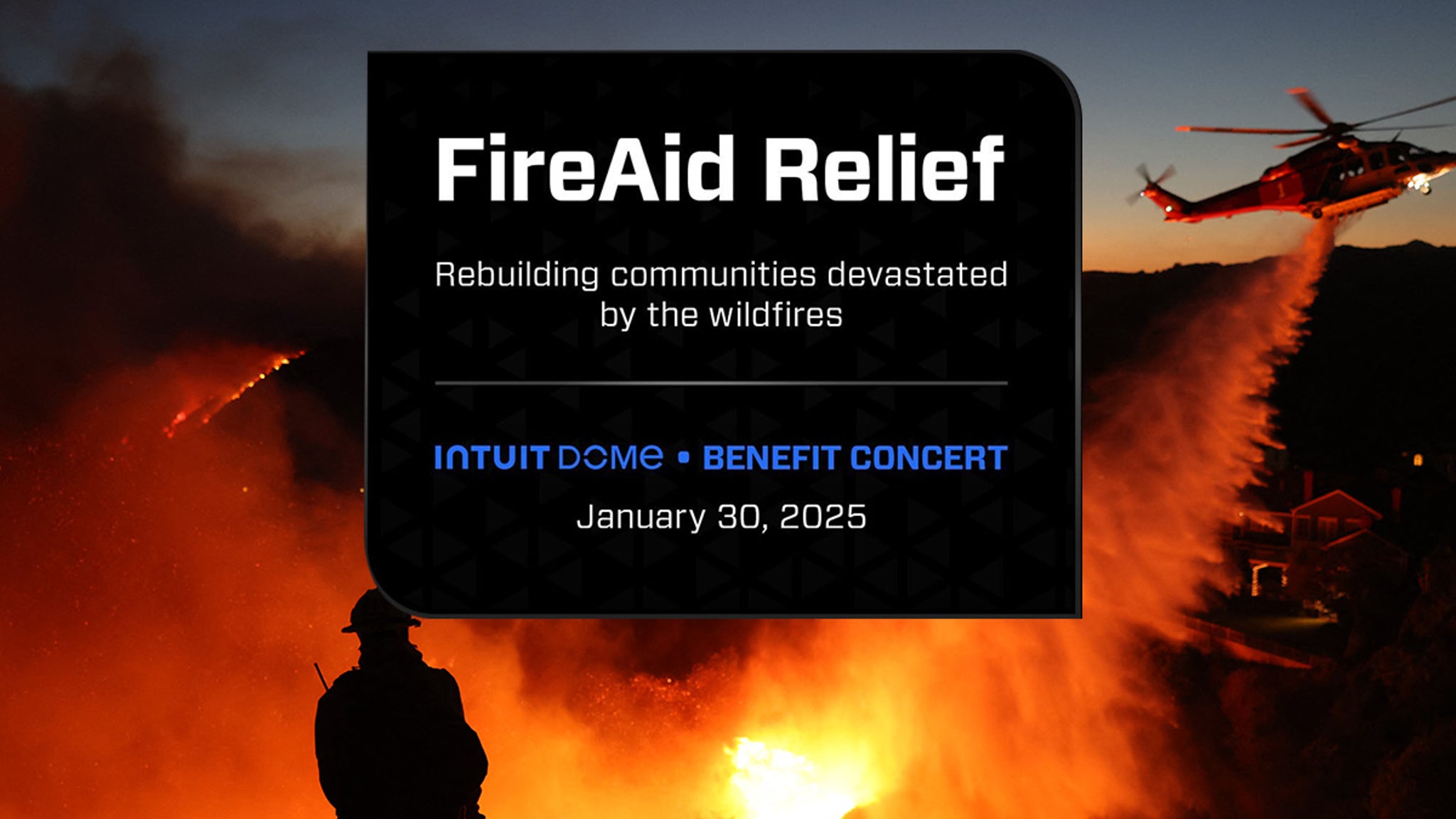
The upcoming benefit concert for Los Angeles wildfire victims will be exciting, engaging and will raise a ton of money … and big-name artists and bands are clamoring for a chance to help out.
TMZ has learned … there’s been an outpouring of interest from musicians who want to get involved … so much so, organizers are expanding the scope of this event.

We’re told more than 50 artists and bands have asked to participate … and right now, there are only 24 slots … though organizers are trying to add slots to accommodate the overwhelming response.
The benefit concert, dubbed FireAid, was first announced as being held at the new Intuit Dome in Inglewood, CA … but our sources say it will also be held at The Forum … which is just down the street. That’s how big this is getting.

We’re told the performances will also be live streamed.
The full lineup is still being finalized and we don’t have any names right now … but we’re told all of the performers are based in Los Angeles.
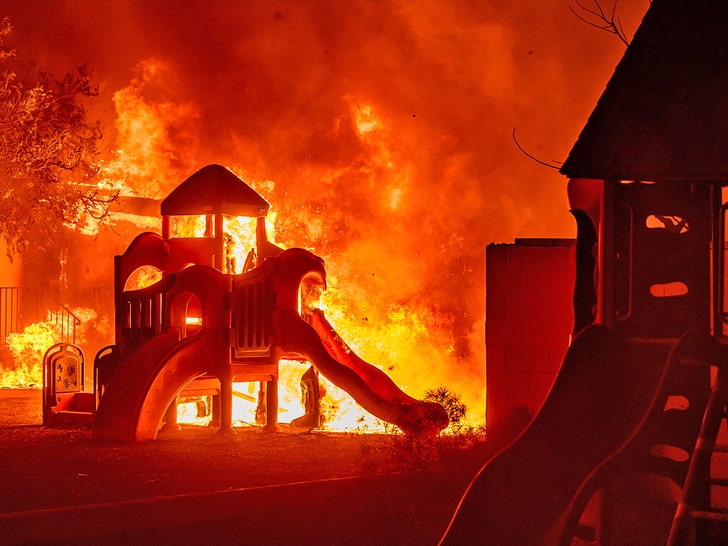
We do know Taylor Swift and Beyoncé — two of the biggest acts in music — will not be involved … but that’s fair, considering they aren’t really rooted in L.A. despite having homes here.
There’s a huge pool to draw from and this concert is going to be HUGE … and it’s going to help lots of folks who are starting from scratch.
TMZ.com
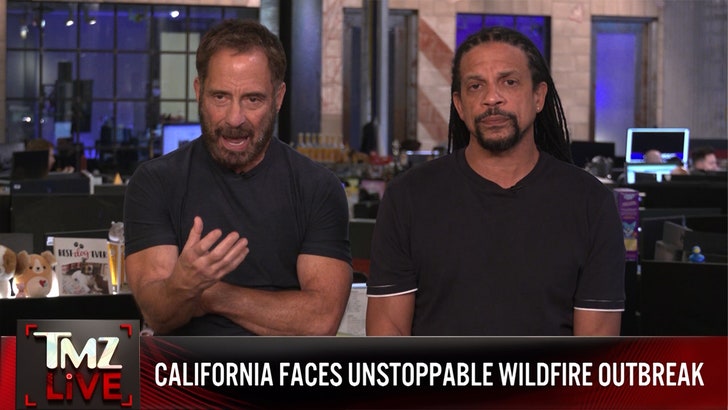
Thousands have been displaced by the Palisades and Eaton Fires and Los Angeles is now tasked with rebuilding over 12,000 structures lost in the inferno.
People lost their homes, their businesses, their cars and basically all of their possessions in the fire … and the rebuilding effort will be massive.
So too will this benefit concert.
Stay tuned!!!
Lifestyle
A Couple Kisses That Sealed the Deal

When Olivia Christine Snyder-Spak matched with Elias Jeremy Stein on Hinge in September 2021, she was a decade into online dating but had never found an ideal partner. “I had probably gone on at least a few hundred first dates, sometimes even doing two in a day,” she said.
Mr. Stein was less versed in internet matchmaking and had been on only a handful of dates over the previous year. “I wanted a serious relationship and decided to try the online route since meeting people in person during Covid was harder,” he said.
At the time, Mr. Stein, 35, was renting an apartment in Prospect Heights, Brooklyn; Ms. Snyder-Spak, 36, lived on Manhattan’s Lower East Side.
The two exchanged messages for a week about their shared love for cooking classes and art projects and exchanging funny stories. Then, Mr. Stein asked Ms. Snyder-Spak on a mini-golfing date.
When they met, in mid-September, at the Putting Green mini-golf course in Brooklyn, Mr. Stein was struck by Ms. Snyder-Spak’s energy. “She was super cute and seemed bubbly,” he said.
They played golf for an hour, chatting about their backgrounds and professions as they navigated the course. “We laughed a lot because Olivia kept hitting the ball far away from the hole,” Mr. Stein said. “The conversation was so good that I asked her for drinks afterward.”
They walked to the nearby Other Half Brewing, sat outside and continued talking over beers for the next several hours. “We were easy with each other, and it was clear we had clicked,” Mr. Stein said.
Eventually, it started to rain heavily. As they waited for their Uber rides, Mr. Stein asked Ms. Snyder-Spak if he could kiss her. “I said yes, and when he smooched me, it felt like a movie kiss,” she said, describing it as “very romantic.”
They settled into a dating cadence almost immediately, seeing each other several times a week for activities like sushi-making, comedy shows and museums. On Halloween, they went to Green-Wood Cemetery in Brooklyn. “The spookiness of a cemetery seemed fitting, and the fact that Eli felt the same way was a big sign that he was going to be a great teammate, down for whatever,” Ms. Snyder-Spak said.
A vacation to Turks and Caicos Islands in January 2022 solidified their commitment. “Our flight back got canceled because of bad weather and a staffing shortage, and the two we booked after that also got canceled,” Mr. Stein said. “We eventually ended up in Miami and got bumped on our flight home.”
Nevertheless, they had fun. “That’s when I knew that Olivia was the one.”
The experience made Ms. Snyder-Spak “realize that I wanted to do hard things together with Eli forever,” she said.
Mr. Stein grew up in Durham, N.C. He is a product manager on the software development team at Memorial Sloan Kettering in New York and the founder of Admissions Intelligence, a college admissions platform that uses artificial intelligence. He has a bachelor’s degree in international relations from Vassar College.
Ms. Snyder-Spak is from Woodbridge, Conn., and works as the director of nonfiction at the entertainment production company Topic Studios, in New York. She has a bachelor’s degree in film from Dartmouth.
After their Turks and Caicos trip, the couple began spending several nights a week at one of their two apartments. In July 2022, they began renting a place, which they’ve since bought, in Park Slope, Brooklyn.
Their bond grew as they decorated their home and traveled to places like Brazil, Portugal and Costa Rica. “My love for Olivia was getting stronger, and it was the right time to propose,” Mr. Stein said.
[Click here to binge read this week’s featured couples.]
On Dec. 13, 2023, during a nighttime picnic in Prospect Park, Mr. Stein asked Ms. Snyder-Spak to marry him as the Geminids meteor shower brightened the skies. As they kissed after she said yes, they caught a glimpse of a shooting star.
More than a year later, on Dec. 29, they wed on the front stoop of a Park Slope brownstone owned by Rabbi Yael Werber, a friend of the couple and the ceremony’s officiant. Rabbi Werber is affiliated with Congregation Beit Simchat Torah. Afterward, they walked to Mille-Feuille Bakery Cafe in Prospect Heights and indulged in three desserts.
In September, Mr. Stein and Ms. Snyder-Spak had hosted a six-day, pre-wedding celebration in Asheville, N.C., for 140 guests; it included activities such as solving a murder mystery, visiting local breweries and tubing down the French Broad River. The festivities culminated in a symbolic wedding ceremony on Sept. 1 at Yesterday Spaces, an event venue in Leicester, N.C.
“All my online dating before Eli was worth it because I found the guy I was looking for all along,” Ms. Snyder-Spak said. “I remember the hard work, but now everything feels like magic.”
Lifestyle
The Southern California fires have us on the edge of our seat. When can we finally relax?

When our city went up in flames last week, everyone I know in Los Angeles was in emergency mode. Now, as a new week begins, it’s hard to know how to feel.
For those of us living in neighborhoods not decimated by fire, the acute threat seems to have passed, at least for the moment. The skies are blueish and a light breeze is blowing as I write this. There’s ash on the ground, but less of it in the air. Most LAUSD schools have thankfully reopened. Friends and neighbors who left town are trickling back home.
And yet the National Weather Service warned of a “particularly dangerous situation” with wind gusts up to 45 to 70 mph from 4 a.m. Tuesday through 12 p.m. Wednesday for swaths of Los Angeles and Ventura counties. Additional powerful wind events are also expected throughout the week.
“We are not in the clear yet and we must not let our guard down,” Los Angeles Fire Chief Kristin Crowley said at a news conference Monday.
And so, in my house at least, the evacuation bags are still packed and waiting by the door and my phone remains in easy reach at all times. But how much longer do we have to live like this, allowing Watch Duty alerts to interrupt our sleep, poised for flight? When will we stop feeling the threat of fire hanging over our heads? Or has the threat always been there and we’re only now just seeing it?
“The reality check is there will always be events that nature throws at us that, no matter how great our technology, we can’t fight,” said Costas Synolakis, professor of civil and environmental engineering at USC. “We don’t have to live in fear, but this should give us pause about how vulnerable we are.”
A season of high risk
Fire experts say it was the deadly combination of extremely high Santa Ana winds of up to 99 mph and a city that hadn’t seen significant rain in eight months that set the stage for the two most destructive fires in L.A. history: the Palisades fire and the Eaton fire. Collectively they have burned more than 37,000 acres and killed at least 24 people.
“How a fire starts, grows and spreads has a lot to do with wind and rainfall,” said Amanda Stasiewicz, assistant professor of fire policy and management at the University of Oregon. “We had this duality of high risk from drought making things very pro-fire growth and pro-fire proliferation plus fast-moving winds that are going to carry it quickly, make it harder to suppress and challenge firefighter safety.”
The winds may have died down for now, but the dry conditions remain unchanged, making it easy for new fires to break out from a long list of sources. If the underbelly of an overheated car comes in contact with bone-dry vegetation, that can start a fire. If someone accidentally drags a chain behind their truck, unknowingly sending sparks into the air, that too can set our hills ablaze.
“As long as these drought conditions endure, having that go bag packed is not a bad idea,” Stasiewicz said. “If you have a wind event, the opportunity is there to have a fire get bigger, quicker — and larger fires are harder to contain.”
Her advice? Keep an eye on the weather forecast, paying special attention to wind advisories. “It’s a bit of keeping yourself on your toes,” she said.
This ends with rain
Despite the terrifying imagery and intense warnings, keep in mind that the high wind gusts predicted for the coming week are still significantly lower than the howling “Wizard of Oz”-like winds that blew through the city the night our two deadly fires began.
“To be clear, it looks very unlikely that we’ll see strong north winds of anywhere near the magnitude that we did in the beginning of [last] week,” said Daniel Swain, a UCLA climate scientist on a YouTube livestream on Friday.
However, he does not think L.A. is out of the woods yet when it comes to fire risk.
“Relatively strong Santa Ana winds have a cumulative effect on intense drying,” he said. “I call them atmospheric blow-dryer-like winds. The longer they blow, the dryer and more flammable the vegetation becomes.”
According to Swain, the city of L.A. will not truly be able to breathe a collective sigh of relief until we see rain.
“What we really need is an inch or two of rain to truly and finally end fire season in L.A.,” he said. “Until then, any time there are dry windy conditions, we are going to see an additional risk.”
Unfortunately, there is only a slim chance of scattered showers in the forecast for the next two weeks.
“There is a chance we may continue to see fire risk into February or even March,” Swain said.
Facing a new reality
Even with no rain in the forecast, Synolakis, who has studied people’s response to natural disasters like tsunamis, hurricanes and fires across the world, thinks it’s likely that most of us will relax our hyper-vigilant state fairly soon.
“Last week the feeling in my community in Venice was eerily similar to the first few days after 9/11 when people didn’t know if there were going to be more attacks elsewhere in the United States,” he told me. “Hearing helicopters, and seeing these giant plumes of fire increased our uncertainty. People didn’t know if the fire was going to spread all the way down here.”
But as long as the fire plumes continue to clear and evacuation orders continue to be downgraded to warnings or less, he expects people who have not been directly affected by the fires to return to a semblance of normalcy.
“If there is no new flare-up, I think by the weekend people in surrounding communities will take a deep sigh of relief,” he said.
Whether that relief is warranted, however, is worth considering. The feeling of acute threat may have passed, but climate scientists have been warning us for decades that a warming world will be accompanied by more intense weather and more intense fire.
“These fires are entirely unexpected, but this is what I keep telling people about climate change,” Synolakis said. “You are going to have more events that are unexpected, and you are not going to be able to deal with them.”
-

 Health1 week ago
Health1 week agoOzempic ‘microdosing’ is the new weight-loss trend: Should you try it?
-
/cdn.vox-cdn.com/uploads/chorus_asset/file/25822586/STK169_ZUCKERBERG_MAGA_STKS491_CVIRGINIA_A.jpg)
/cdn.vox-cdn.com/uploads/chorus_asset/file/25822586/STK169_ZUCKERBERG_MAGA_STKS491_CVIRGINIA_A.jpg) Technology6 days ago
Technology6 days agoMeta is highlighting a splintering global approach to online speech
-

 Science3 days ago
Science3 days agoMetro will offer free rides in L.A. through Sunday due to fires
-
/cdn.vox-cdn.com/uploads/chorus_asset/file/25821992/videoframe_720397.png)
/cdn.vox-cdn.com/uploads/chorus_asset/file/25821992/videoframe_720397.png) Technology7 days ago
Technology7 days agoLas Vegas police release ChatGPT logs from the suspect in the Cybertruck explosion
-

 Movie Reviews1 week ago
Movie Reviews1 week ago‘How to Make Millions Before Grandma Dies’ Review: Thai Oscar Entry Is a Disarmingly Sentimental Tear-Jerker
-

 Health1 week ago
Health1 week agoMichael J. Fox honored with Presidential Medal of Freedom for Parkinson’s research efforts
-

 Movie Reviews1 week ago
Movie Reviews1 week agoMovie Review: Millennials try to buy-in or opt-out of the “American Meltdown”
-

 News7 days ago
News7 days agoPhotos: Pacific Palisades Wildfire Engulfs Homes in an L.A. Neighborhood














